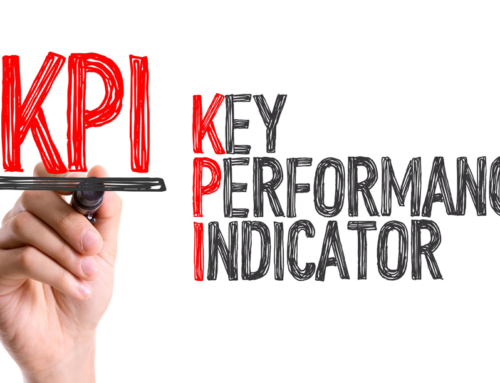Digital Marketing, by its nature, is conducive to measurement, which is excellent, but at the same time, all of that marketing data creates the real possibility of analytics overload. With the sheer abundance of data available from a business digital properties, the challenge becomes knowing what to measure and what to ignore. Fortunately, in the alphabet soup of business acronyms, three letters that help, KPI.
To better understand KPIs for digital marketing, it is useful to look at them within the broader business context.
What is a KPI?
KPIs (Key Performance Indicators) are:
“the critical (key) indicators of progress toward an intended result. KPIs provide a focus for strategic and operational improvement, create an analytical basis for decision making and help focus attention on what matters most.”
Simply defined, KPIs are measurements that illustrate progress toward specific business objectives.
What to look for in a KPI
A good KPI should have a unit of measure, a clear data source that will provide the measurement unit, a desired outcome and a time period in which progress toward the outcome is measured. KPI specifics will be different across business units though, there can be some overlap as well. Here’s a quick rundown of KPIs you might see from the business or another department:
Business KPIs might be:
- Revenue Growth
- Profit Margin (net or gross)
- EBITDA
- Market Share
More sales-focused KPIs might be:
- New contracts signed per month (quarter/year)
- The dollar value of contracts signed per month (quarter/year)
- Length of time from first touch to contract close
- Accounts retention
General Marketing KPIs might look like:
- Number of Marketing Qualified Leads (MQLs) generated
- MQLs that become Sales Qualified Leads (SQLs)
- Cost per lead
- Marketing ROI

KPIs vs. Metrics
It’s worth noting that while all KPIs are metrics, or derived from metrics, not all metrics are KPIs. Just because something can be measured doesn’t automatically make it a KPI.
Let’s look at the metric of total website traffic as an example. It is usually a substantial number and tempting to report on, but by itself, without some analysis and additional data, it isn’t all that meaningful. It is, however, a useful foundation metric and synthesized with other data, form fills or document downloads, for example, you could have a KPI that reports on the Percentage of Traffic responding to a CTA,
Digital Marketing KPI Examples
With this understanding of the relationship between metrics and KPIs, what are some examples of Digital Marketing KPIs? Here are a few to get you started:
- Number of leads from digital that are MQLs
- Digital MQLs that become SQLs
- Digital SQLs that become clients
These examples lead us to what is one of the most critical KPI for marketers:
-> Digital Marketing ROI
Whatever KPIs get chosen will be in large part determined by the upstream business and general marketing KPIs, so consider this handful just a starting point for developing your own.
Make Better Decisions
A wise man once asked, “how do you know where you’re going if you don’t know where you are?” That, in a nutshell, is benchmarking, a critical step in the development of KPIs. By establishing where you are from a departmental performance perspective, benchmarking enables you to know how far, and where to go, with goals.
It is a reality check on how realistic the goals are, but in the end, the process of developing KPIs can be used to set better goals creating a virtuous feedback loop that yields better KPIs.
It’s Worth It!
No doubt, KPIs take some work, from development through reporting, but it a worthwhile undertaking and will deliver positive dividends, both tactically and strategically, for your digital marketing program.
If you would like to learn more, don’t hesitate to contact us

